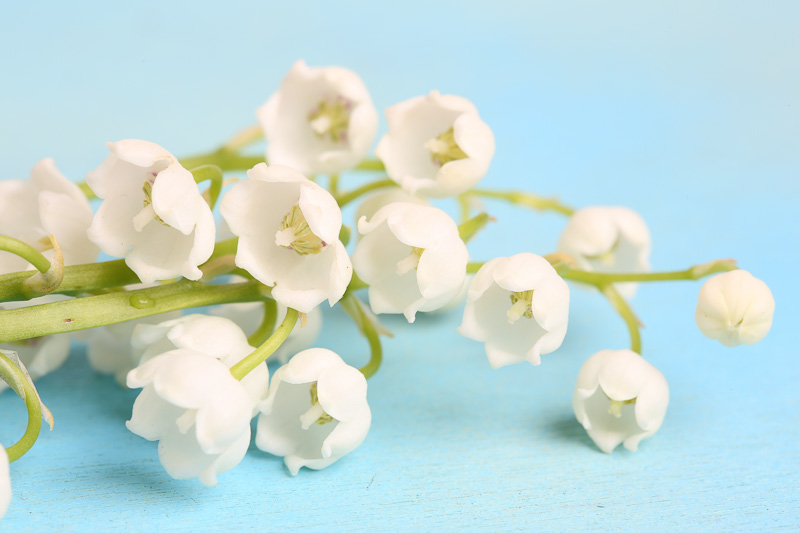Lily of the Valley
Lily of the Valley (Convallaria majalis) is a cherished perennial cherished for its delicate, bell-shaped white flowers and sweet, enchanting fragrance. This woodland plant, symbolizing purity and humility, has a timeless appeal in gardens and folklore.
Growth Habit: Lily of the Valley forms extensive colonies by spreading underground rhizomes. This characteristic makes it an excellent ground cover, especially in shaded areas. It typically grows about 6 to 12 inches tall (15-30 cm), with a similar spread.
Bloom Time: The plant blooms profusely in late spring, usually in May, hence the nickname “May Bells.” Each stem, or ‘scape’, holds a linear array of tiny, nodding bell-like flowers.
Shade Tolerance: This plant thrives in partial to full shade, making it ideal for understory plantings and north-facing gardens. It’s a favorite for woodland settings, shaded borders, and areas under deciduous trees.
Soil and Watering: Lily of the Valley prefers rich, well-drained soil with consistent moisture. It tolerates a range of soil types, provided they are kept moist but not waterlogged. Mulching helps retain soil moisture and keeps roots cool.
Care and Maintenance: Once established, it requires minimal care. It’s advisable to divide congested clumps every 3-5 years to maintain vigor. Also, removing spent flower stems encourages healthy foliage growth. Essential Tips for Growing and Nurturing This Charming Plant.
Caution: All parts of the plant are highly poisonous if ingested, so care should be taken if you have pets or small children.
Symbolism and Uses: Beyond its use in gardens, Lily of the Valley holds a place in bridal bouquets and May Day traditions. Its fragrance is also popular in perfumery.

